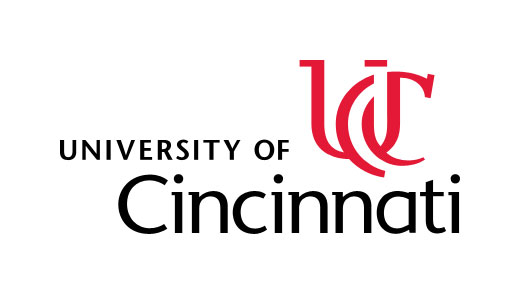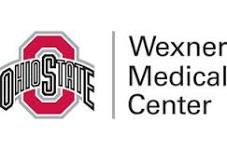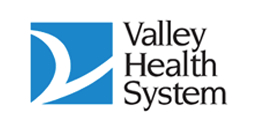Endovascular Therapy Following Imaging Evaluation for Ischemic Stroke 3
| Status: | Terminated |
|---|---|
| Conditions: | Neurology |
| Therapuetic Areas: | Neurology |
| Healthy: | No |
| Age Range: | 18 - 90 |
| Updated: | 9/21/2018 |
| Start Date: | April 2016 |
| End Date: | August 23, 2017 |
This is a study to evaluate the hypothesis that FDA cleared thrombectomy devices plus medical
management leads to superior clinical outcomes in acute ischemic stroke patients at 90 days
when compared to medical management alone in appropriately selected subjects with the Target
mismatch profile and an MCA (M1 segment) or ICA occlusion who can be randomized and have
endovascular treatment initiated between 6-16 hours after last seen well.
management leads to superior clinical outcomes in acute ischemic stroke patients at 90 days
when compared to medical management alone in appropriately selected subjects with the Target
mismatch profile and an MCA (M1 segment) or ICA occlusion who can be randomized and have
endovascular treatment initiated between 6-16 hours after last seen well.
DEFUSE 3 is a prospective randomized Phase III multicenter controlled trial of patients with
acute ischemic anterior circulation strokes due to large artery occlusion treated between
6-16 hours of stroke onset with endovascular thrombectomy therapy vs. control.
The primary endpoint, the modified Rankin Score, will be assessed at 3 months. The patients'
participation in the study concludes at that time (3 months from stroke onset). The study
will randomize up to 476 patients over 4 years. The purpose of DEFUSE 3 is to assess the
safety and efficacy of thrombectomy in carefully selected patients in an extended time
window. Only the devices listed in this protocol will be used. Selection of the specific
device (or devices) is determined by the individual endovascular therapist.
Patients who meet the inclusion criteria will undergo either CT Perfusion/CT Angiogram or MR
DWI/PWI/MRA studies prior to randomization. Patients who have evidence of an ICA or MCA M1
occlusion and a Target Mismatch Profile will be randomized in a 1:1 ratio to treatment with
one or more DEFUSE 3 approved thrombectomy devices (only the devices listed in this protocol
are approved for use in DEFUSE 3) plus standard medical therapy versus standard medical
therapy alone. Patients who are enrolled, but not randomized, will receive standard therapy
according to local guidelines. Baseline data, and information about early stroke therapies,
will be captured for this group of patients.
Randomization of a maximum of 476 patients is planned. A novel adaptive design will identify,
at interim analyses, the group with the best prospect for showing benefit from endovascular
treatment, based on baseline core lesion volumes and the times since stroke onset. Interim
analyses will be conducted at 200 and 340 patients, at which time the study may stop for
efficacy/futility, or the inclusion criteria may be adjusted in the case of futility.
acute ischemic anterior circulation strokes due to large artery occlusion treated between
6-16 hours of stroke onset with endovascular thrombectomy therapy vs. control.
The primary endpoint, the modified Rankin Score, will be assessed at 3 months. The patients'
participation in the study concludes at that time (3 months from stroke onset). The study
will randomize up to 476 patients over 4 years. The purpose of DEFUSE 3 is to assess the
safety and efficacy of thrombectomy in carefully selected patients in an extended time
window. Only the devices listed in this protocol will be used. Selection of the specific
device (or devices) is determined by the individual endovascular therapist.
Patients who meet the inclusion criteria will undergo either CT Perfusion/CT Angiogram or MR
DWI/PWI/MRA studies prior to randomization. Patients who have evidence of an ICA or MCA M1
occlusion and a Target Mismatch Profile will be randomized in a 1:1 ratio to treatment with
one or more DEFUSE 3 approved thrombectomy devices (only the devices listed in this protocol
are approved for use in DEFUSE 3) plus standard medical therapy versus standard medical
therapy alone. Patients who are enrolled, but not randomized, will receive standard therapy
according to local guidelines. Baseline data, and information about early stroke therapies,
will be captured for this group of patients.
Randomization of a maximum of 476 patients is planned. A novel adaptive design will identify,
at interim analyses, the group with the best prospect for showing benefit from endovascular
treatment, based on baseline core lesion volumes and the times since stroke onset. Interim
analyses will be conducted at 200 and 340 patients, at which time the study may stop for
efficacy/futility, or the inclusion criteria may be adjusted in the case of futility.
Clinical Inclusion Criteria:
1. Signs & symptoms consistent w/ the diagnosis of acute anterior circulation ischemic
stroke
2. Age 18-90 years
3. Baseline NIHSSS is ≥ 6 and remains ≥6 immediately prior to randomization
4. Endovascular treatment can be initiated (femoral puncture) between 6 and 16 hours of
stroke onset. Stroke onset is defined as the time the patient was last known to be at
their neurologic baseline (wake-up strokes are eligible if they meet the above time
limits).
5. modified Rankin Scale less than or equal to 2 prior to qualifying stroke (functionally
independent for all ADLs)
6. Patient/Legally Authorized Representative has signed the Informed Consent form.
Clinical Exclusion Criteria:
1. Other serious, advanced, or terminal illness (investigator judgment) or life
expectancy is less than 6 months.
2. Pre-existing medical, neurological or psychiatric disease that would confound the
neurological or functional evaluations
3. Pregnant
4. Unable to undergo a contrast brain perfusion scan with either MRI or CT
5. Known allergy to iodine that precludes an endovascular procedure
6. Treated with tPA >4.5 hours after time last known well
7. Treated with tPA 3-4.5 hours after last known well AND any of the following; age >80,
current anticoagulant use, history of diabetes or prior stroke, NIHSS >25
8. Known hereditary or acquired hemorrhagic diathesis, coagulation factor deficiency;
recent oral anticoagulant therapy with INR > 3 (recent use of one of the new oral
anticoagulants is not an exclusion if estimated GFR > 30 ml/min).
9. Seizures at stroke onset if it precludes obtaining an accurate baseline NIHSS
10. Baseline blood glucose of <50mg/dL (2.78 mmol) or >400mg/dL (22.20 mmol)
11. Baseline platelet count < 50,000/uL
12. Severe, sustained hypertension (Systolic BP >185 mmHg or Diastolic BP >110 mmHg)
13. Current participation in another investigational drug or device study
14. Presumed septic embolus; suspicion of bacterial endocarditis
15. Clot retrieval attempted using a neurothrombectomy device prior to 6 hrs from symptom
onset
16. Any other condition that, in the opinion of the investigator, precludes an
endovascular procedure or poses a significant hazard to the subject if an endovascular
procedure was performed.
Neuroimaging Inclusion Criteria:
1. ICA or MCA-M1 occlusion (carotid occlusions can be cervical or intracranial; with or
without tandem MCA lesions) by MRA or CTA
AND
2. Target Mismatch Profile on CT perfusion or MRI (ischemic core volume is < 70 ml,
mismatch ratio is >/= 1.8 and mismatch volume* is >/= 15 ml)
Alternative neuroimaging inclusion criteria (if perfusion imaging or CTA/MRA is technically
inadequate):
A) If CTA (or MRA) is technically inadequate:
Tmax>6s perfusion deficit consistent with an ICA or MCA-M1 occlusion AND Target Mismatch
Profile (ischemic core volume is < 70 ml, mismatch ratio is >1.8 and mismatch volume is >15
ml as determined by RAPID software)
B) If MRP is technically inadequate:
ICA or MCA-M1 occlusion (carotid occlusions can be cervical or intracranial; with or
without tandem MCA lesions) by MRA (or CTA, if MRA is technically inadequate and a CTA was
performed within 60 minutes prior to the MRI) AND DWI lesion volume < 25 ml
C) If CTP is technically inadequate:
Patient can be screened with MRI and randomized if neuroimaging criteria are met.
Neuroimaging Exclusion Criteria:
1. ASPECTS score <6 on non-contrast CT (if patient is enrolled based on CT perfusion
criteria)
2. Evidence of intracranial tumor (except small meningioma) acute intracranial
hemorrhage, neoplasm, or arteriovenous malformation
3. Significant mass effect with midline shift
4. Evidence of internal carotid artery dissection that is flow limiting or aortic
dissection
5. Intracranial stent implanted in the same vascular territory that precludes the safe
deployment/removal of the neurothrombectomy device
6. Acute symptomatic arterial occlusions in more than one vascular territory confirmed on
CTA/MRA (e.g., bilateral MCA occlusions, or an MCA and a basilar artery occlusion).
We found this trial at
40
sites
Click here to add this to my saved trials
Click here to add this to my saved trials
Brigham and Women's Hosp Boston’s Brigham and Women’s Hospital (BWH) is an international leader in...
Click here to add this to my saved trials
Beth Israel Deaconess Medical Center Beth Israel Deaconess Medical Center (BIDMC) is one of the...
Click here to add this to my saved trials
Cleveland Clinic Cleveland Clinic is committed to principles as presented in the United Nations Global...
Click here to add this to my saved trials
3400 Spruce St
Philadelphia, Pennsylvania 19104
Philadelphia, Pennsylvania 19104
(215) 662-4000

Hospital of the University of Pennsylvania The Hospital of the University of Pennsylvania (HUP) is...
Click here to add this to my saved trials
Rhode Island Hospital Founded in 1863, Rhode Island Hospital in Providence, RI, is a private,...
Click here to add this to my saved trials
Click here to add this to my saved trials
Click here to add this to my saved trials
Click here to add this to my saved trials
Click here to add this to my saved trials
Northwestern Memorial Hospital Northwestern Memorial is an academic medical center hospital where the patient comes...
Click here to add this to my saved trials
University of Cincinnati The University of Cincinnati offers students a balance of educational excellence and...
Click here to add this to my saved trials
Palmetto Health Richland Palmetto Health Richland, originally founded in 1892 as Columbia Hospital, has a...
Click here to add this to my saved trials
The Ohio State University, Wexner Medical Center Located in Columbus, The Ohio State University Wexner...
Click here to add this to my saved trials
Click here to add this to my saved trials
Click here to add this to my saved trials
Click here to add this to my saved trials
Click here to add this to my saved trials
Click here to add this to my saved trials
Click here to add this to my saved trials
University of Wisconsin In achievement and prestige, the University of Wisconsin–Madison has long been recognized...
Click here to add this to my saved trials
Click here to add this to my saved trials
2450 Riverside Ave
Minneapolis, Minnesota 55454
Minneapolis, Minnesota 55454
(612) 273-3000

University of Minnesota Medical Center, Fairview Improving patients' lives drives the innovation that makes University...
Click here to add this to my saved trials
Abbott Northwestern Hospital Our hospital has a long and proud history as a health care...
Click here to add this to my saved trials
Vanderbilt University Vanderbilt offers undergraduate programs in the liberal arts and sciences, engineering, music, education...
Click here to add this to my saved trials
Click here to add this to my saved trials
Click here to add this to my saved trials
Click here to add this to my saved trials
Temple University Hospital On January 18, 1892 a three-story house at 3403 North Broad Street...
Click here to add this to my saved trials
Providence St. Vincent Medical Center Providence St. Vincent is renowned for its many centers of...
Click here to add this to my saved trials
The Valley Hospital The Valley Hospital is a fully accredited, acute care, not-for-profit hospital serving...
Click here to add this to my saved trials
Click here to add this to my saved trials
Click here to add this to my saved trials
Click here to add this to my saved trials
Harborview Medical Center Harborview Medical Center is the only designated Level 1 adult and pediatric...
Click here to add this to my saved trials
Stanford University Stanford University, located between San Francisco and San Jose in the heart of...
Click here to add this to my saved trials
Click here to add this to my saved trials
Click here to add this to my saved trials
Click here to add this to my saved trials
















